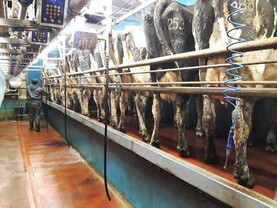A pilot project for new farm buildings, which would integrate old building styles, has been recommended in a new Government strategy aimed at preserving Ireland’s old vernacular buildings.
Vernacular buildings, both domestic and farm, are those which were built by the occupants themselves, drawing on longstanding traditions.
“This action will deal specifically with farm buildings, with a view to encourage a move away from current models of industrial-scale, utilitarian-style farm structures through developing models for new farm buildings that heed the lessons of the vernacular,” according to authors of the strategy, called A Living Tradition, a strategy to enhance the understanding, minding and handing on of our built vernacular heritage.
Guidance
The pilot project by the Department of Heritage, will see guidance published on farm buildings and Teagasc is to partner on the project. Farmers, farm bodies, farm building designers, craftspeople and agricultural colleges are set to be included in the project.
Farming hamlets
The Government also wants to gain an understanding of the factors that lead to the viability or decay of farming hamlets – closely-grouped farmyards in a wide variety of configurations which are found in every county, but are prone to total loss or loss of character.
“Many farm hamlets, especially in eastern counties (but also, for example, in parts of the Dingle Peninsula) are likely to be at least late medieval in date, especially where they are associated with medieval castles, churches or other features,” it said.
Others, such as those in the west, are likely to have been founded in the 18th and 19th centuries.
Churns stands and gates
The strategy will also examine built vernacular heritage.
This includes churn stands, farm and field gates, wells, old potato ridges, booley (transhumance) sites, field boundaries and gates, trees, bushes and stones with traditional associations and mass paths and old (often disused) routeways.
The Government intends to develop a way of recording both vernacular heritage and buildings.






 This is a subscriber-only article
This is a subscriber-only article










SHARING OPTIONS: